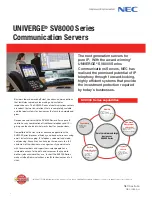
Galaxy GHDX4 RAID iSCSI-SAS/SATA InstaHardware Reference Manual
56
A logical partition created from within a logical volume.
Use logical partitions as the basic units to present
storage capacity as LUNs.
A physical data link
*
An asterisk indicates a logical drive’s assignment (a
preferred ownership) either to RAID controller A or
RAID controller B
Data paths combined using the trunking or LACP “Link
Aggregation Control Protocol” methodology. (Firmware
rev. 3.71) In iSCSI specifications, this is defined as a
group of network ports for an iSCSI TCP session. Fault
tolerance with multiple links are also available.
A single GbE port delivers an approximate 100MB/s
throughput. Combining two GbE ports into a portal
group can double the bandwidth. You can combine up
to 4 ports into a group.
Note the following with the configuration as diagrammed below:
1. Use the 10/100BaseT Ethernet only port
[ IP: 192.168.1.129]
for
management purposes, i.e., Galaxy Array Manager or telnet
console. This 10/100BaseT port is not used for I/O transactions.
2. Configurations such as subnet or Virtual LAN can separate iSCSI
host links, decreases overheads, and eliminates the impact of
link failure.
3. Multiple arrays or logical partitions can be created and made
available separately through different IDs or LUN numbers on the
host ports. Usually, a RAID5 logical drive of 8 members often
brings optimal array performance. You may attach the expansion
enclosures, the 3U JBOD series, to expand system capacity.
















































